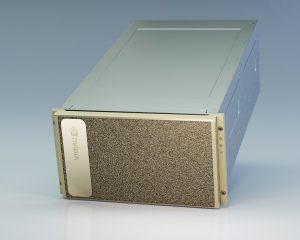Today we begin shipping Intel’s new Xeon E5-2600 v4 processors. They provide more CPU cores, more cache, faster memory access and more efficient operation. These are based upon the Intel microarchitecture code-named “Broadwell” – we expect them to be the HPC processors of choice.
Important changes in Xeon E5-2600 v4 include:
- Up to 22 processor cores per CPU
- Support for DDR4 memory speeds up to 2400MHz
- Faster Floating Point Instruction performance
- Improved parallelism in scheduling micro-operations
- Improved performance for large data sets
Move faster with Xeon E5-2600 v4
Expect these new processors to be more nimble than their predecessors. A variety of microarchitecture improvements have been added to increase parallelism, speed up processing time, and strip out inefficiencies from previous models. Broadwell reduces the time to complete a multiplication by 40% (division operations also complete more quickly). Each core’s ability to optimize instruction ordering has been improved by ~6%. The tables which manage on-die L2 cache have been expanded to speed up memory operations. Several CPU instruction latencies have been reduced. Overall, Intel expects these new CPUs to complete at least 5% more instructions on every clock cycle.
For complete details, please see our Detailed Analysis of the Intel Xeon E5-2600v4 “Broadwell-EP” Processors
Transitioning from “Haswell” E5-2600 v3 Series Xeons
Because the new “Broadwell” CPUs are socket-compatible with the previous-generation “Haswell” CPUs, the upgrade path is simple. All existing platforms that support v3 CPUs can also accept v4 CPUs. This also simplifies the choice for those considering a new system: the new CPUs use existing, proven platforms. There’s little risk in selecting the latest and highest-performance components. Those who are adding to existing HPC clusters will find they have a choice: spend the same for increased performance or spend less for the same performance. Here is a comparison of the older generation with this new generation:

Get more for less – improved cost-effectiveness
Because each CPU core offers increased performance, and many models offer a higher core count, a lower-end CPU model can match performance with many of the older CPU models. Here are a few comparisons of note:
- Xeon E5-2630v4 offers performance equivalent to the E5-2640v3 (and can even challenge the E5-2650v3)
- Xeon E5-2640v4 matches the E5-2650v3 in nearly every case
- Xeon E5-2650v4 matches the E5-2660v3 in nearly every case (and challenges the E5-2670v3)
- Xeon E5-2660v4 will beat the E5-2670v3 and E5-2680v3 on well-parallelized applications
- Xeon E5-2680v4 and Xeon E5-2690v4 best almost every E5-2600v3 CPU
Notable adjustments
Note that the E5-2670 CPU model has been removed from the line-up. This simplifies choice and did not come as a surprise to us: the majority of our customers had been selecting the E5-2680 and E5-2690 over the E5-2670. As noted above, the E5-2650 v4 or E5-2660 v4 can easily stand in for the older E5-2670 v3.
The E5-2623 CPU model has been modified in such a way that it isn’t ideal for the same workloads. Previously, it was a relatively high-clock-speed model available at a low price. However, the base clock speed has been adjusted downwards by 18%.
Next Steps – Putting Xeon E5-2600 v4 into Production
All of our Xeon workstations, servers & clusters are immediately available with these new CPUs. They are socket-compatible with all Xeon E5-2600 v3 platforms, so your existing systems can also be upgraded. Our most popular products which leverage these new Xeon processors are:
